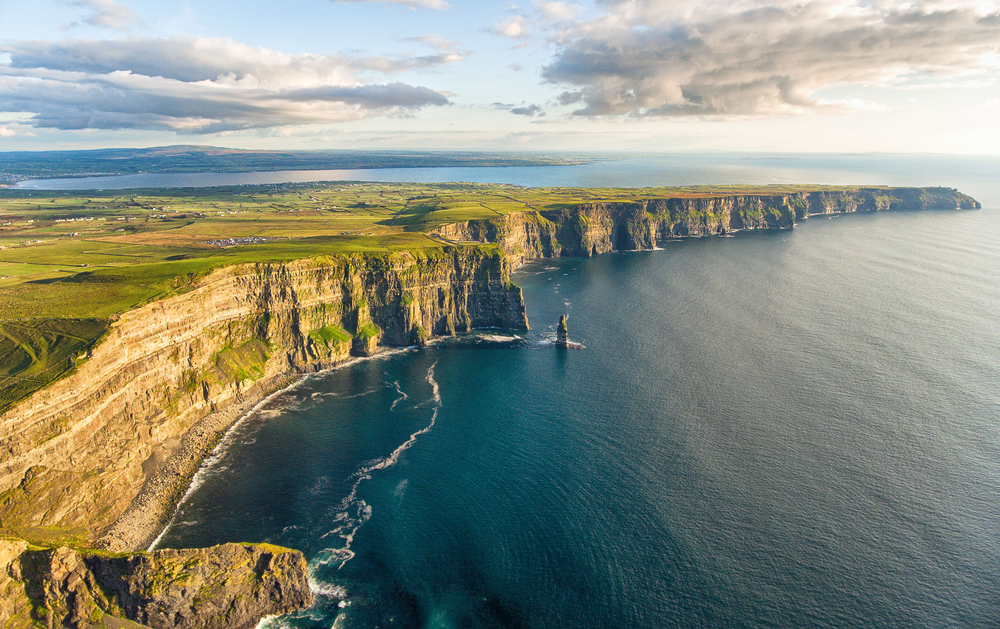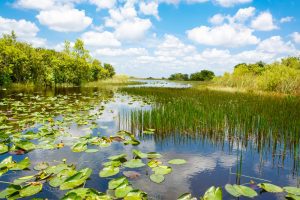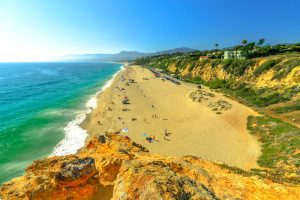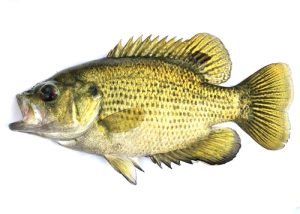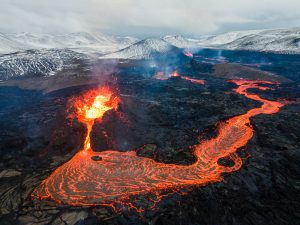Defined as a vertical rock formation that has formed alongside a sea, cliffs are extraordinary wonders of nature. One of the most striking traits about cliffs is that they provide unique habitats capable of sustaining various plant and animal species, such as birds, amphibians, and reptiles.
When it comes to plants, species known to thrive on cliffs include mosses, shrubs, and even trees. Another noteworthy fact is that while an ordinary cliff is formed vertically, there are cliffs that have been formed horizontally. In fact, the highest known cliffs are those formed under the sea.
Also included in this article will be a short, detailed list of the highest cliffs as well as some frequently asked questions.
Let’s jump into it!
Overall, a cliff is made up of three core parts: the edge, the pediment, and the face.
The edge, of course, is located at the top and can sometimes be quite rounded. The pediment, or base, is at the bottom while the face of the cliff is the middle.
These cliff types can be found in places that overlook any body of water. Aside from natural cliffs, there are also roadcuts that are human-made and are also defined by a steep and rocky face. These types aren’t the same as a natural cliff but, but because of their similarities, they are worth mentioning.
Table of Contents
1. Limestone cliffs
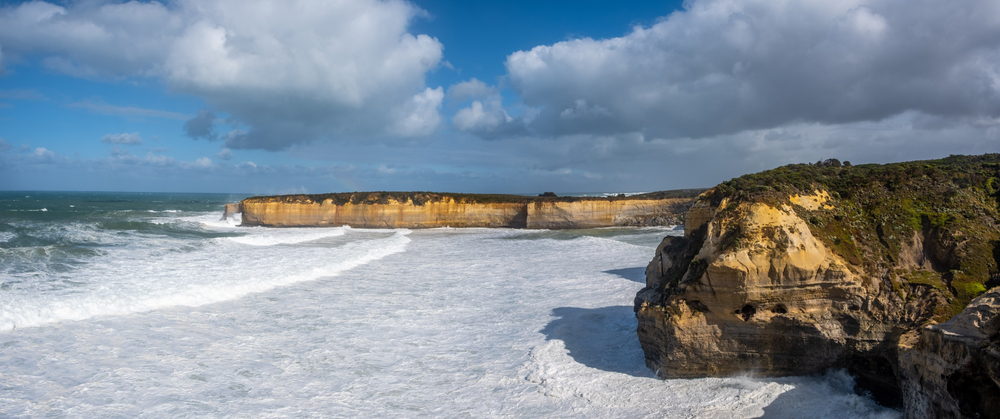
Commonly found in areas near Lakes Michigan and Huron, these limestone cliffs have been gravely exposed to erosion, particularly in areas where the edge and base of the cliff reside. This is where the majority of all organic material lives. Here, the little-known existing plant life is unable to thrive due to the harsh conditions that include wind, ice, and intense sun.
Furthermore, accumulated moisture often rots plant roots, and weak soil makes it difficult for plants to root successfully on cliffs such as these.
Plantlife that can weather these conditions includes various ferns, shrubs, and trees. Some wildlife has also been known to roam the cracks and crevices of the limestone cliff, typically bats and snakes.
2. Chert cliffs
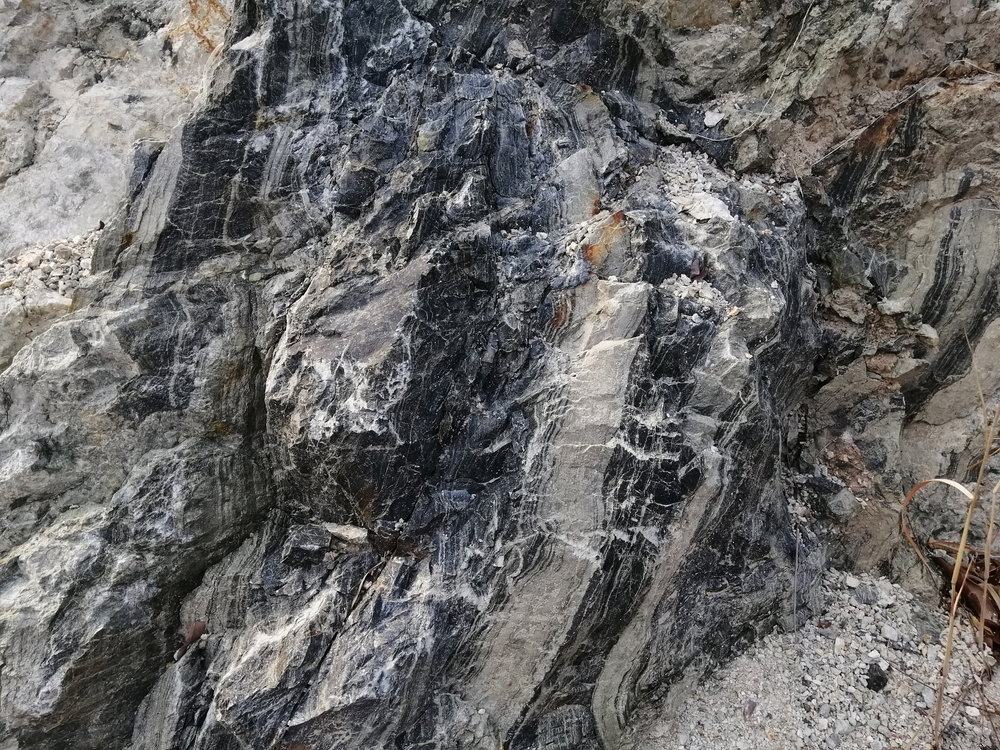
Native to places like Southwest and Central Missouri, chert cliffs can be as tall as 80 feet high. While they are characterized by crystalline properties similar to quartz, chert is a hard and tough type of rock that doesn’t erode or penetrate easily.
During the formation stage, microcrystals are formed by silicon deoxidization. Thus, the transformation of irregularly shaped nodules occurs. The most common Chert formations take place along streams and rocky ledges found in valleys and ravines.
If numerous nodules form together, layers within the sedimentary mass undergo a unique chemical formation process that is extremely rare.
3. Sandstone cliffs
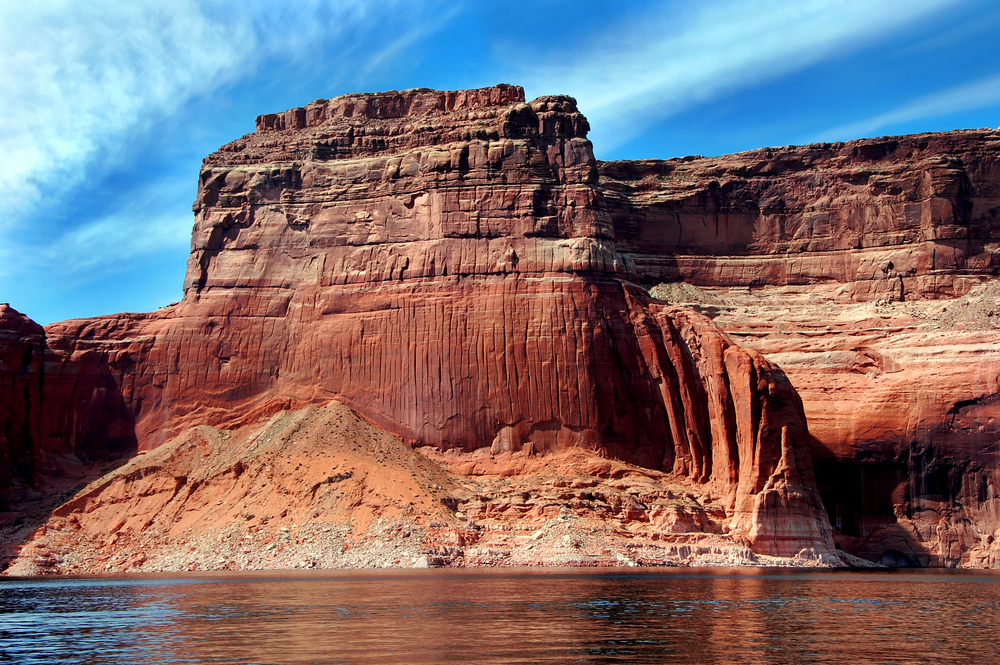
Commonly found along the upper western and lower southern peninsulas of the U.S., sandstone cliffs are just as affected by erosion and the elements as limestone cliffs. Due to erosion, the little bit of soil that resides in and around this particular type of cliff is found mainly in the cliff’s cracks and crevices.
Here is where decaying roots and plant debris also reside. Vegetation and plant life are restricted to the cliff face where the bedrock meets the cliff’s upper edge. Here, trees, bushes, hairy hawkweed, and wild strawberries grow.
Ferns and vines also grow along the face of this particular type of cliff. Additionally, although fairly rare, wildlife has been known to make this cliff type their home. Species include common ravens and raptors like bald eagles.
4. Igneous cliffs
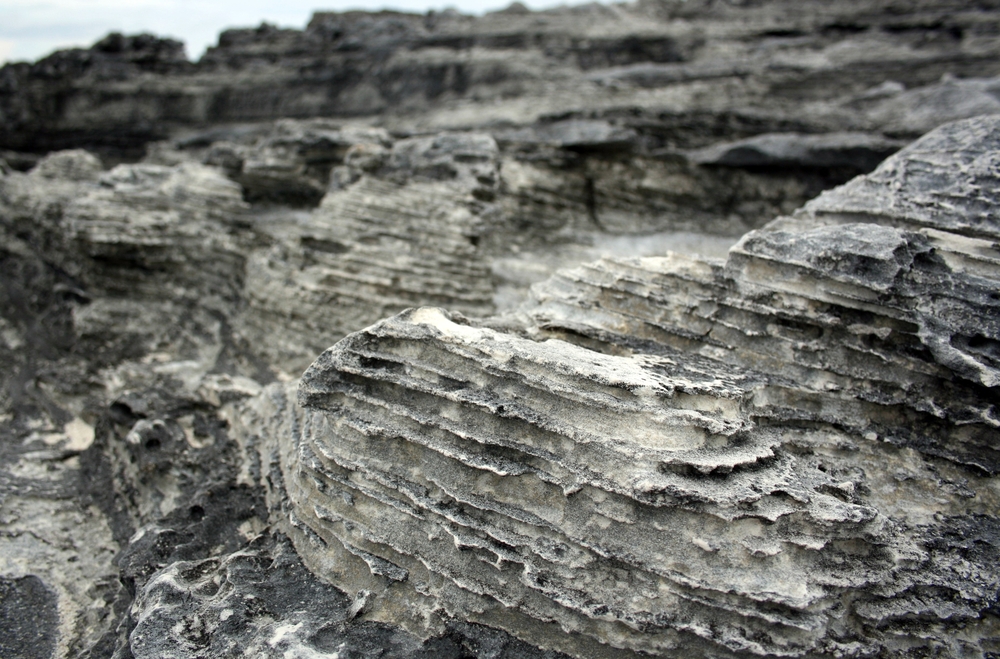
Typically located where divergent plate boundaries exist, igneous rocks surround oceanic plates. Generally speaking, igneous rocks are formed from solidified crystallization, thus creating magma and lava, although lava forms only when magma has risen to the surface.
That said, there are two different igneous groups that are worth discussing. The first group is referred to as extrusive. Simply put, this means that this type of rock formation is volcanic. This happens when magma has erupted, allowing the lava to cool down by the time it reaches the surface. Extrusive examples include obsidian, pumice, and andesite. The second group of igneous rocks is known as intrusive, or plutonic.
Intrusive occurs when the chambers of rock have cooled and solidified while the magma is still in the rock. Because the overall cooling process of magma is slow, it takes mineral grains a long time to grow, resulting in large, clear crystals.
5. Unconsolidated cliffs

This cliff type is made up of unconsolidated rocks that have no firmness nor coherent formations and consist of sand, clay, and decaying rock.
This rock formation type is typically native to areas along the Mississippi River, especially northern Missouri. Generally speaking, unconsolidated rock formations can commonly be found in streams and rivers. Examples of congregated rock formations for this specific classification include granule to boulder-sized fragments with a specific range of particle size.
6. Chalk cliffs
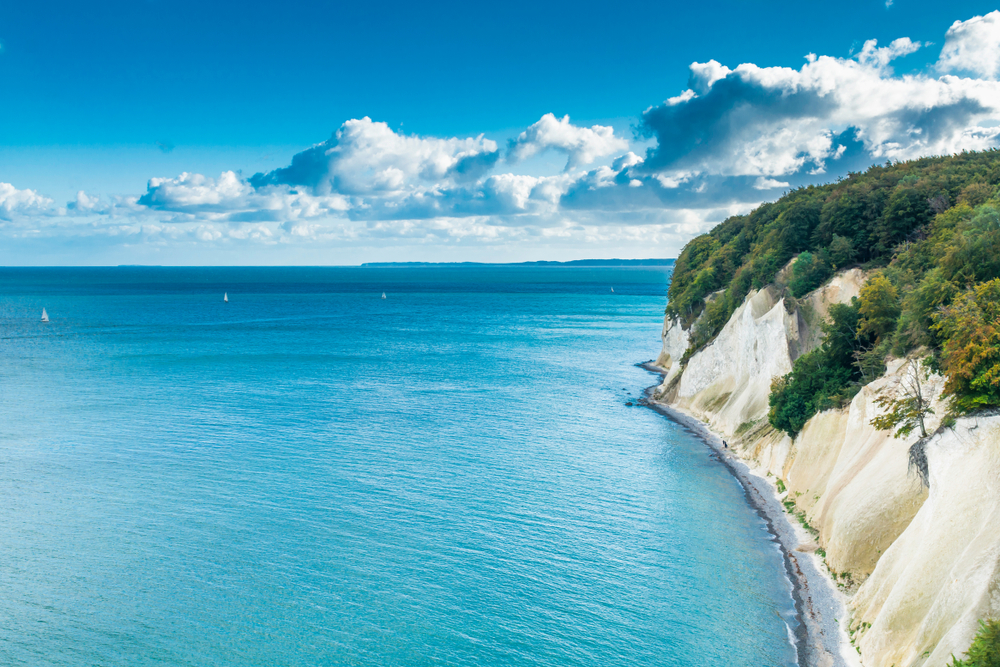
Chalk cliffs are created from the ooze of marine life organisms that have died and have sunk to the bottom of the ocean. Once the remains have been washed ashore, chalk is formed from the ooze of the remains.
Chalk deposits are common in various places throughout the world and, as a result, have formed many noteworthy cliffs (discussed later). That said, the majority of this particular type of chalk formation is found in western Europe where chalk clings have been eroded from waves that have washed ashore at the cliff’s vertical joint.
The created chalk formation’s main element comes from silica, and eventually forms a substance called diatomite. Limestone, previously mentioned on this list, is another substance that comes from chalk.
7. Granite cliffs
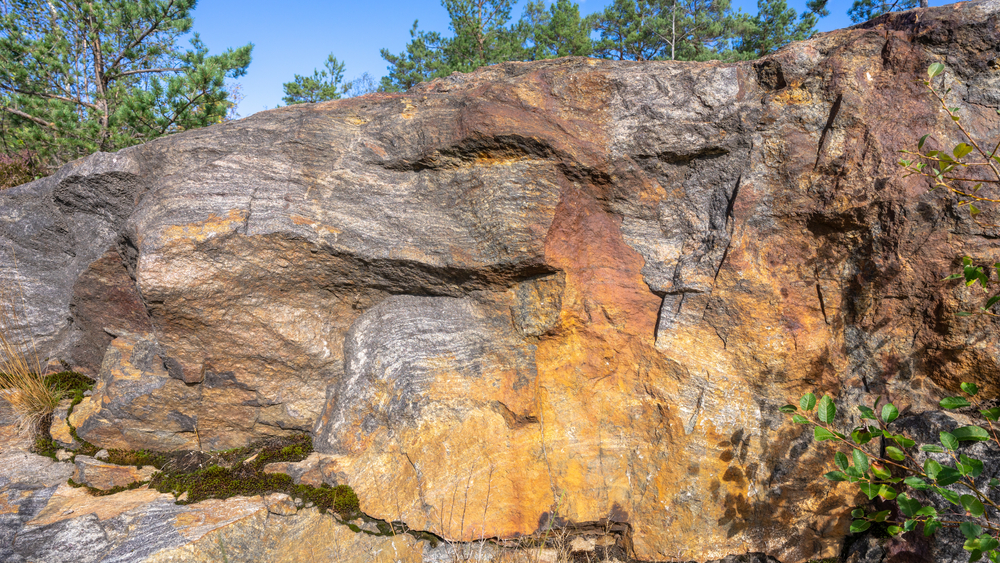
Labeled as a morphed igneous rock, granite dates all the way back to the Precambrian Era, more than 600 million years ago. Generally speaking, this particular cliff type is exposed to elements such as ice, and bedrock exfoliation. However, other conditions like wind and sunshine destroy all viable plant life.
These types of cliffs are commonly seen in places like Ontario and Wisconsin and only allow for limited organic soil to keep the plant life healthy. This form of organic soil is made up of decaying roots as well as varying plant-based material found in the cracks, ledges, and crevices of the cliff.
The most commonly found wildlife are raptors and common ravens, with occasional bald eagles. A wide range of vegetation and plantlife includes trees, shrubs, common juniper, blueberries, and honeysuckle. Pine drops are also seen growing on these cliff types, but barely.
8. Basalt cliffs
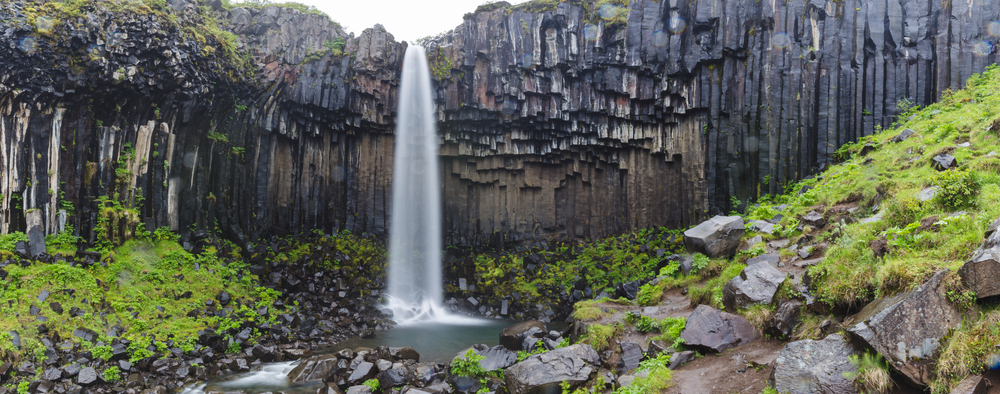
The final type of cliff formation that will be discussed in this article is basalt rock. This is an igneous rock type and, again, can either be volcanic or plutonic. In this case, however, the rock tends to be volcanic. More often than not, basalt rock is characterized by a dark color and fine-grain features.
This type of rock formation is incredibly common, one of the most common on earth, in fact. Typically you’ll find basalt cliffs located near the ocean with divergent boundaries and hotspots.
When these boundaries pulled away from each other, hot rocks rose to the earth’s surface at these hotspots and created this fascinating type of cliff.
The 5 Highest Cliffs in the World

As mentioned, a cliff is nothing more than a steep slope made from rock-based material. Limestone, sandstone, chalk, or granite cliffs are ultimately formed vertically due to the process of erosion.
But where can you go to see some of these impressive, vertical world wonders? Let’s take a look at the five highest cliffs in the world.
1. Trango Towers

Located in northern Pakistan, the Trango Towers are known as the world’s tallest cliffs, measuring nearly 21,000 feet tall. These cliffs are formed from granite and are extremely difficult to climb, one area on their eastern side has a daunting sheer drop.
Despite how difficult these towers are to climb, there are several attempts on record. The first successful climbing attempt took place in 1977 when the climbers reached as far as the upper south face.
Pop culture has also recognized Trango Towers, as it was mentioned in the 2015 movie Point Break as well as referenced in the TV show The Good Wife and the video game, Final Fantasy XII.
2. Auyan-tepui
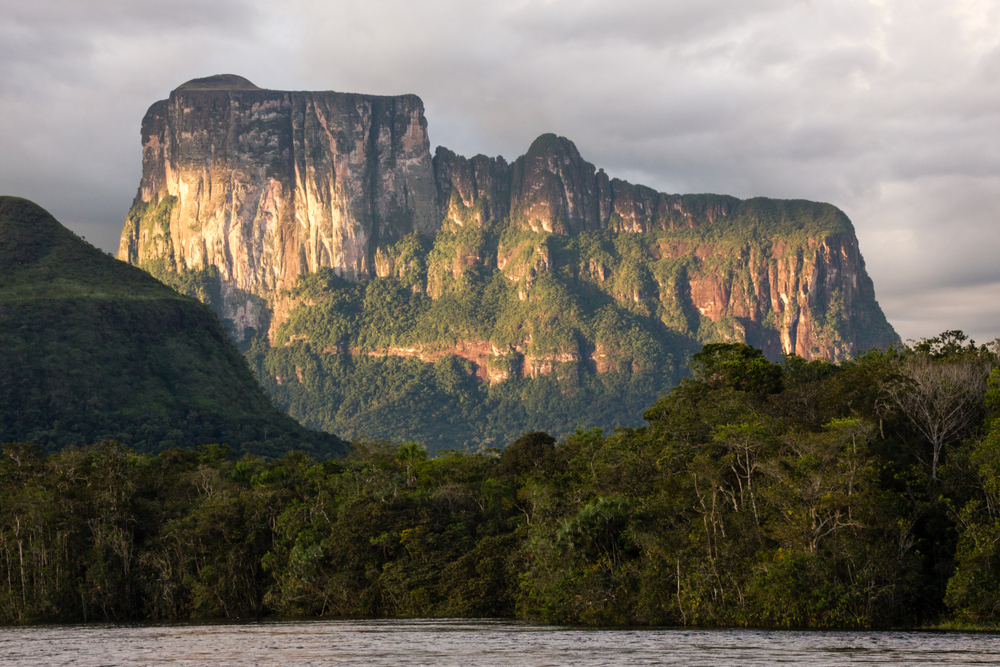
Deemed the most visited cliff in the world, Auyan-tepui is not the tallest but is definitely the largest of all the cliffs. Located in Venezuela, its total measurement comes in at a range between 5,200 and 8,040 feet. The summit measures roughly 258 sq. miles and the slope measures roughly 280 sq. miles.
One key feature of this popular cliff is the Angel Falls, with a 3,212 fit drop and an uninterrupted fall of 2,648 feet, 19 times farther than that of Niagra Falls. Other features represented here include Devil’s Canyon and an extensive cave system.
The name of this mountain comes from Auyan Massif and was first recognized in 1933 when a bush pilot seeking gold ore crashed his small airplane on top of Te-pui and had no other choice but to hike his way down. The hike took 11 days. There is also a lot of flora, birds, and amphibians, and reptiles that call the cliff home.
3. Mitre Peak
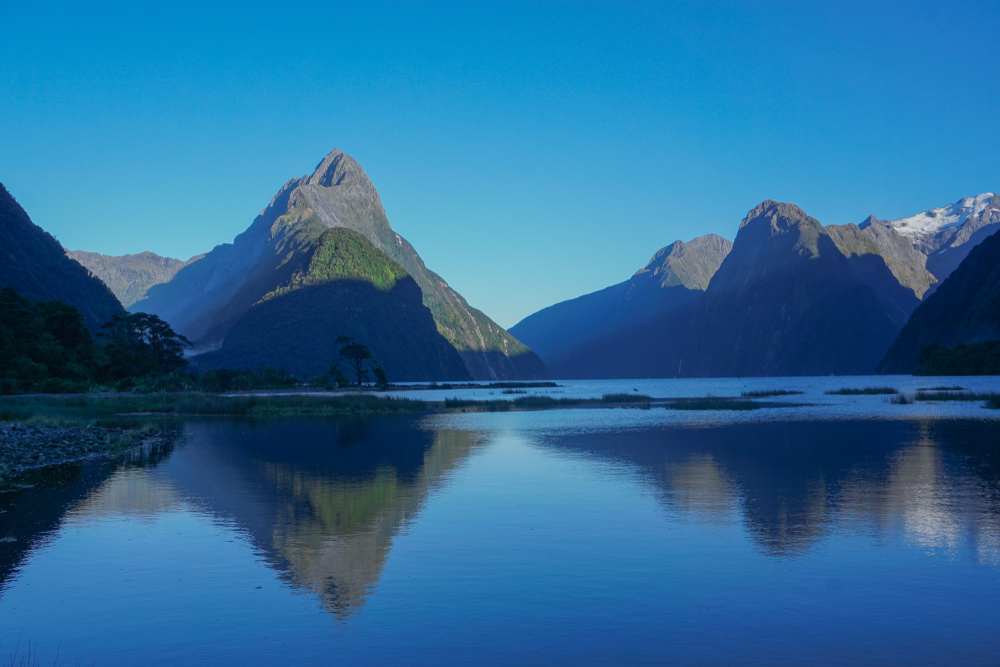
Located in New Zealand, Mitre Peak is named after a Captain who thought the mountain looked like the mitre headgear worn by Christian bishops. The mountain itself measures roughly 5,600 feet and features five grouped peaks that, when looked at from certain angles, make it look as though there is only one peak.
The mountain is popular, and hikers typically prefer to hike at night. This is considered a difficult mountain to climb and attempts to conquer the mountain began as early as the early 1880s when a pair of climbers reached the crest with no coats or equipment and very little food.
The most recent climbing attempt of this particular mountain occurred in 1914.
4. Thor Peak

Standing well over 5,000 feet above sea level, mount Thor is located in Canada. More specifically, it is located on Baffin Island in Auyuittuq National Park. This particular cliff features a vertical drop of 4,101 feet and an overhanging angle of 15 degrees. Mount Thor, named after the Norse god of thunder, is a popular destination for climbers and campers alike.
Designated areas are provided for each, with climbers getting a specifically designated area at the northern base of the cliff. Furthermore, mount Thor features a granite formation, making it a definite challenge to do any type of climbing. This cliff is considered to be part of the Arctic Cordillera Mountain Range.
Since the late 1960s, there have been a couple of attempts to climb to the top of this gigantic cliff. Both early attempts were deemed successful, with the more recent ascent successfully completed in 2012.
5. The Amphitheatre

Located in South Africa, the Amphitheatre measures 4,000 feet tall with a face a little over 3 miles long. Furthermore, the length measuring from the highest point to the valley floor comes in at 6,000 feet.
Aside from the amazing cliff face, another major feature of this cliff is the Tugela Falls, which has an impressive 3,100-foot drop. This cliff also features not one but two hiking trails that extend 8,200 feet above sea level. The falls are deemed as the overall highlight of this particular cliff.
The Amphitheatre was shown in the 1964 war film Zulu and was also the site where the British field hospital was located during Rorke’s Drift near the Tugela River.
Frequently Asked Questions
How are cliffs formed?
Cliffs are formed through a process known as erosion by wind, rain, and other elemental factors. Erosion causes the cliffs to become vertical, although this isn’t always the case.
How are sea cliffs formed?
When it comes to the formation of sea cliffs, the process is slightly different, although erosion still plays a role. Here, formation happens over time when erosive waves continually hit the coastline and form a notch, which begins the formation process.
What are some famous cliffs?
One of the most famous cliffs in the world is the white cliffs of Dover, located in England. That said, there are many other famous cliffs, which include the Bunda cliffs in Australia, Kalaupapa cliffs in Hawaii, and the Cliffs of Moher in Ireland.
Conclusion
There are a wide variety of cliff types. However, erosion and weathering are the core elements that start the process that creates these mammoth, vertical rock formations.
In addition to sandstone, limestone, granite, and chalk cliffs, there are countless other cliff types that are common throughout the world.
Despite being limited to poor soil, many of these cliffs can sustain some forms of flora and fauna. While some adventurers attempt to climb these behemoths, simply the view of any cliff is breathtaking and should most definitely be experienced.

